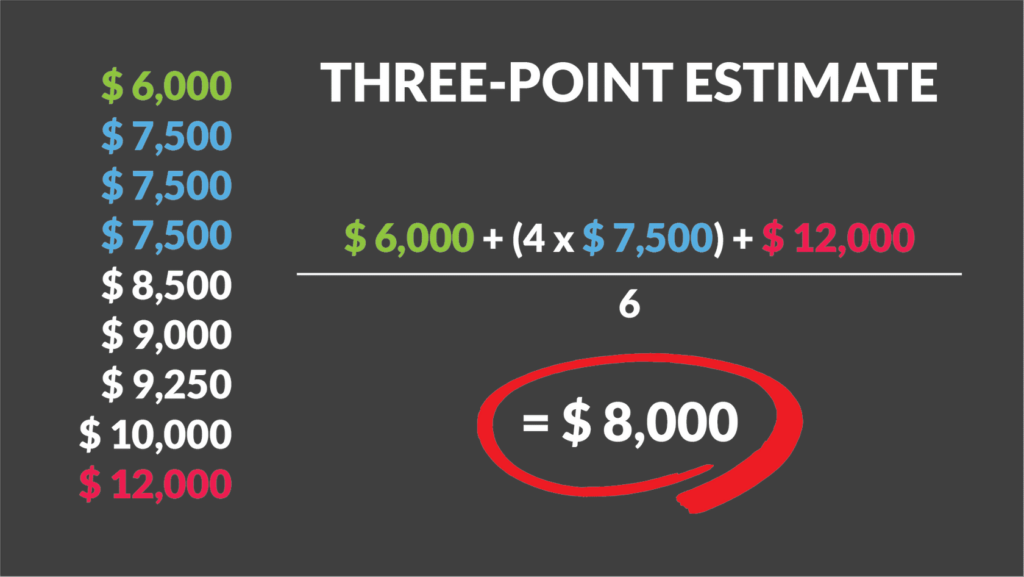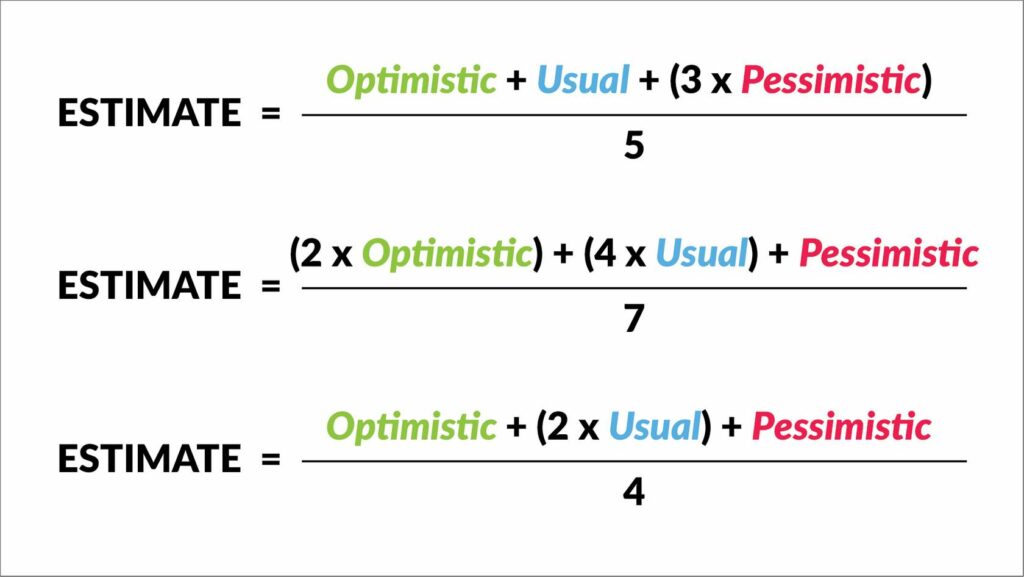Mean, median & mode
A high-quality estimate is one with a low margin of error.
In the last Module, we introduced a number of techniques that can improve the quality of your estimates: analogous and parametric estimating, as well as the expected monetary value (EMV) method.
However, we also skipped over (or assumed) you know the basics – so here is a quick refresher.
Let’s suppose that we need to engage a consultant on a project, but don’t really know how much that is going to cost; so we reviewed similar projects to inform our estimate.
In the last 12 months, we found that on projects of this type, we spent the following amounts on our consultants.
So, how much should we allow in our project budget for this activity?

There are a number of basic estimation methods available to us.
Mode
The first method accepts as our estimate the ‘usual’ price $7,500, without regard for any outliers.
This is the mode – the value that is repeated more than any other.

Median
A median price estimate would look at the entire price range, and pick the one that sits squarely in the middle.
In this list (which is conveniently ranked in order of lowest to highest price), the median cost is $8,500.

Mean
The mean or average value is calculated by adding all the price data up and dividing by the number of price points.
In this instance, the sum of all the price points is $77,250; divided by nine – the number of datapoints in the list – our mean score is $8,583.

Three-point estimating
Another method for improving the quality of estimates that is common to project management is the three-point estimating technique.
Popularised in the PERT project management methodology, it estimates value using a weighted average of the optimistic, usual, and pessimistic forecasts.

Continuing our example from the previous lesson, the optimistic (in other words, most desirable) result is $6,000, the usual (or mode) result is $7,500, and the pessimistic (that is, least desirable) result is $12,000.
We now propose that the usual outcome is four times more likely than the optimistic or pessimistic scenarios, meaning that we effectively have six data points from which we can calculate our average.
In this instance, our three-point estimate of cost would be $8,000.

Note that the weighting of the usual price by four is a default setting in PERT – you can choose your own weighting based on the circumstances of your event, as long as you are clear in explaining your rationale for doing so.
Just make sure you adjust the denominator accordingly!

Like all the methods shown, the three-point estimating technique can also be applied to estimates of time.
It works best if you have a wide range and a high volume of opinions or data to draw on.
Which is best?
Which estimate should we use on our project budget…
- …$7,500 (mode)?
- …$8,500 (median)?
- …$8,583 (mean)?
- …$8,000 (three-point estimate)?
In a project worth $1,000,000, the differences between these four results are trivial, and the temptation may be to pick one at random.
However, across wider ranges with many, many more data points, these differences can become quite significant.
Let it be known, though, that the more data we have, the more precise we can be!
And because the estimates we make in the project planning stage are the benchmarks we will hold ourselves accountable to during project delivery, we want to be as accurate as possible in our forecasts.
Underestimating risks not having enough money to deliver the task or project; whereas, overestimating can have serious implications for our culture of project delivery – implications that we will discuss in more detail later.
Hopefully, too, you can see here the importance of using input data that is as accurate as possible.
In project management, we often say ‘garbage in – garbage out.’
In other words, your results are only as useful as the data you build them on.
Just because we use a fancy formula does not in itself mean that results are reliable.
This is why stakeholder consultation remains such a vital part of project planning.
As you can imagine, though, there is no such thing as a 100 percent perfect estimation method.
It is therefore important to document as thoroughly as possible the assumptions that have gone into your estimates.
This not only aids the risk management process but should help project stakeholders understand that estimates are not statements of fact.
Be careful not to let very loose estimates suddenly become make-or-break targets.
Remember, too, that the further we get into a project, the more uncertainty is reduced and the more accurate our ability to estimate should become.
For that reason, you should constantly revisit and update the estimates you made in the planning process.




